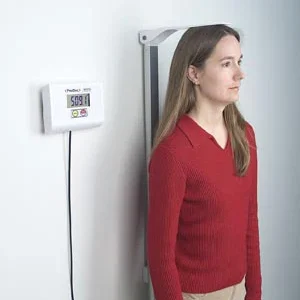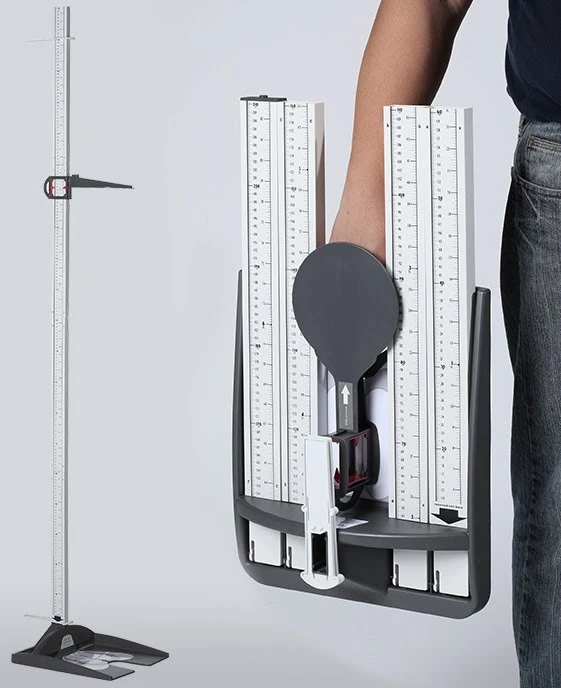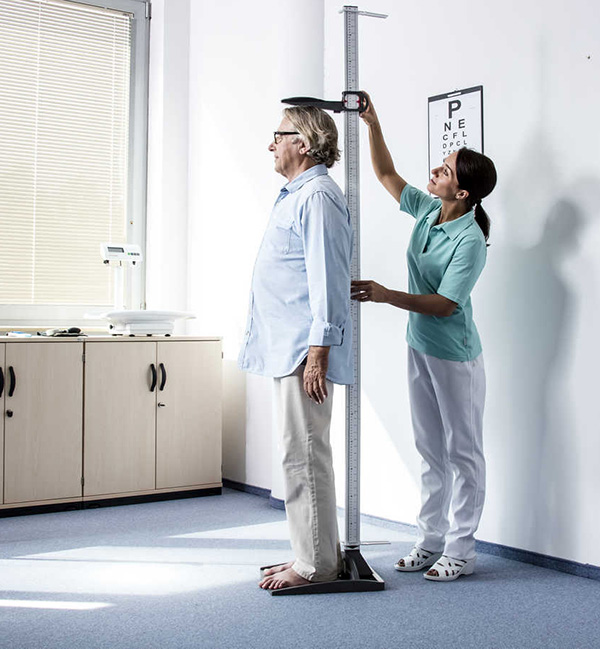Sonar Stadiometer VS Ultrasound Stadiometer
Understanding the Differences in Height Measurement Technology
Sonar and ultrasound stadiometers are fantastic tools for accurate, touchless height measurement. The choice comes down to the speed and accuracy.
Touchless and Accurate
Traditional stadiometers use manual methods for height measurements, but technological advancements have led to the development of sonar and ultrasound stadiometers, both of which offer touchless and highly accurate height measurements.

What is an Ultrasound Stadiometer?
An ultrasound stadiometer uses sound waves, but at a higher frequency than sonar stadiometers. Ultrasound technology involves the emission of ultrasound waves, which bounce off the top of the individual’s head or the floor. Like sonar, the device measures the time it takes for the waves to travel back to the sensor and uses that data to calculate the height. Ultrasound stadiometers are widely known for their precision and are used in medical facilities, fitness centers and home.
Pros of Ultrasound Stadiometers:
- Highly Accurate: Ultrasound technology is extremely reliable, with sub-millimeter precision that makes it ideal for use in professional medical and research environments.
- Environmental Independence: Ultrasound is less affected by surrounding noise or objects, making it slightly more versatile than sonar in challenging settings.
- Ease of Use: These devices often come with user-friendly digital interfaces, making the process straightforward for operators and patients alike.
Cons of Ultrasound Stadiometers:
- Cost: Due to the advanced technology involved, ultrasound stadiometers are typically more expensive than their sonar counterparts. We have seen many affordable consumer ultrasound stadiometers.
- Slower Measurement Time: While still fast, ultrasound stadiometers may take slightly longer to measure height compared to sonar devices.
What is a Sonar Stadiometer?
A sonar stadiometer also uses sound waves to determine a person’s height. The device emits high-frequency sound pulses, which bounce off the top of the person’s head and are reflected back to the stadiometer. By measuring the time it takes for the sound waves to return, the device can calculate the distance from the stadiometer to the person’s head, providing an accurate height measurement.
Pros of Sonar Stadiometers:
- Touchless Measurement: Since sonar technology relies on sound waves, there is no physical contact required, making it hygienic and ideal for busy environments.
- Speed: Sonar stadiometers provide quick measurements, perfect for clinics and other facilities where time efficiency is essential.
- Accuracy: These devices offer precise height measurements, often with millimeter-level accuracy, making them suitable for both professional and research use.
Cons of Sonar Stadiometers:
- Interference: Sonar can sometimes be affected by environmental factors like background noise or surfaces with irregularities, which may slightly impact accuracy in certain situations.
- Limited Range: Sonar stadiometers may have a more limited measuring range compared to some ultrasound stadiometers, though this varies depending on the model.
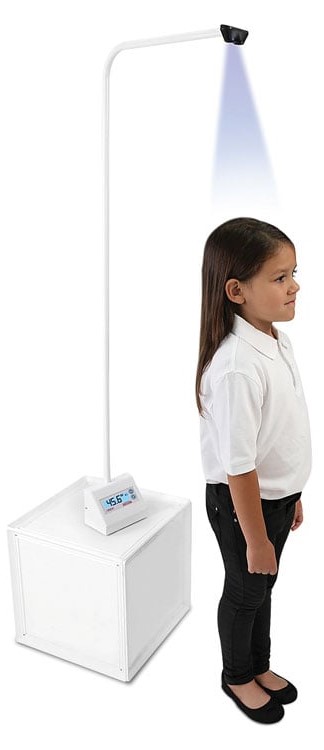
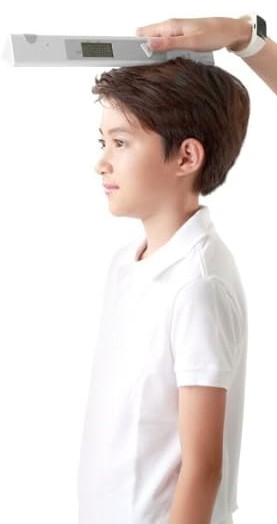
Key Differences Between Sonar and Ultrasound Stadiometers
Technology:
The main distinction is the type of sound waves each device uses. Sonar stadiometers use lower-frequency sound waves, while ultrasound stadiometers rely on higher-frequency ultrasound waves. This difference gives ultrasound stadiometers a slight edge in terms of accuracy and versatility in varied environments.
Accuracy:
Both devices are highly accurate, but ultrasound stadiometers tend to offer even more precise measurements, down to the sub-millimeter level. This makes them the preferred choice for research and clinical applications where the utmost accuracy is required.
Interference:
Sonar stadiometers can be more prone to environmental interference from noise or reflective surfaces, whereas ultrasound stadiometers are generally less affected by these factors.
Speed:
Sonar stadiometers may be faster at taking measurements than ultrasound devices, making them ideal for busy environments where speed is a priority.
Which One Should You Choose?
The choice between a sonar stadiometer and an ultrasound stadiometer largely depends on the setting and specific needs:
- Sonar stadiometers are perfect for clinics, wellness centers, and fitness facilities that need quick and accurate height measurements for a large number of people. Their speed and touchless design make them ideal for environments with high patient or client turnover.
- Ultrasound stadiometers, on the other hand, are suited for medical facilities, research institutions, and specialized clinics where absolute precision is critical. The high frequency of ultrasound waves makes these stadiometers more resilient to external factors, ensuring consistently accurate measurements.
Precise height measurements are essential for everything from routine health screenings to research studies. Sonar stadiometers and ultrasound stadiometers are fantastic tools for accurate, touchless height measurement. The choice comes down to your specific needs, whether it’s speed, cost, or accuracy. Regardless of which option you choose, these modern tools ensure a convenient and reliable way to measure height in various settings.
